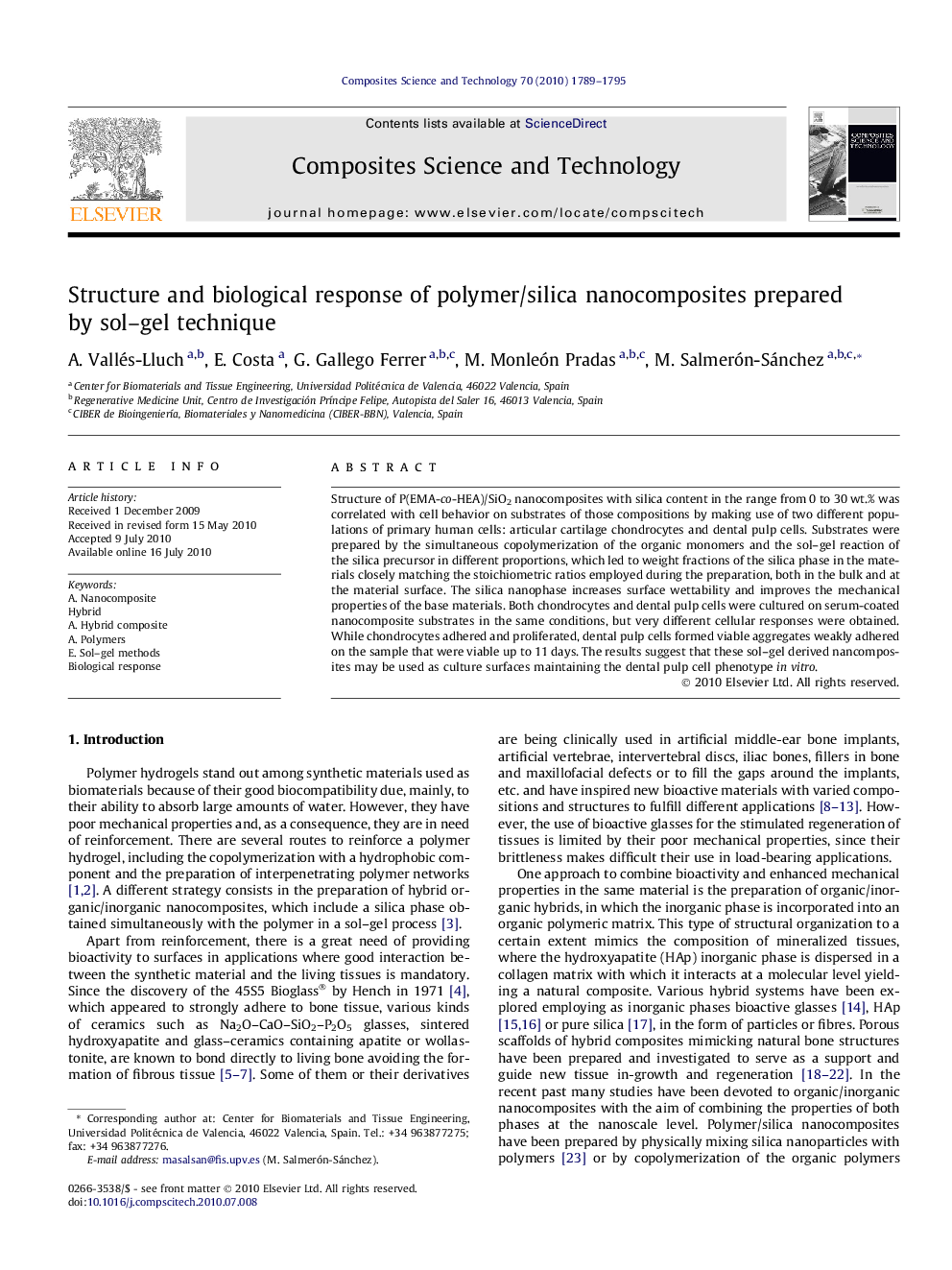| Article ID | Journal | Published Year | Pages | File Type |
|---|---|---|---|---|
| 10425140 | Composites Science and Technology | 2010 | 7 Pages |
Abstract
Structure of P(EMA-co-HEA)/SiO2 nanocomposites with silica content in the range from 0 to 30Â wt.% was correlated with cell behavior on substrates of those compositions by making use of two different populations of primary human cells: articular cartilage chondrocytes and dental pulp cells. Substrates were prepared by the simultaneous copolymerization of the organic monomers and the sol-gel reaction of the silica precursor in different proportions, which led to weight fractions of the silica phase in the materials closely matching the stoichiometric ratios employed during the preparation, both in the bulk and at the material surface. The silica nanophase increases surface wettability and improves the mechanical properties of the base materials. Both chondrocytes and dental pulp cells were cultured on serum-coated nanocomposite substrates in the same conditions, but very different cellular responses were obtained. While chondrocytes adhered and proliferated, dental pulp cells formed viable aggregates weakly adhered on the sample that were viable up to 11Â days. The results suggest that these sol-gel derived nancomposites may be used as culture surfaces maintaining the dental pulp cell phenotype in vitro.
Related Topics
Physical Sciences and Engineering
Engineering
Engineering (General)
Authors
A. Vallés-Lluch, E. Costa, G. Gallego Ferrer, M. Monleón Pradas, M. Salmerón-Sánchez,
